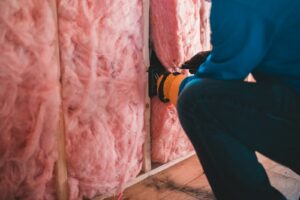The details in the data
Campbell Tickell recently published the results of their work exploring the Housing Ombudsman Service’s (HOS) Landlord Performance data. Here, the organisations Sue Harvey and Catherine Romney, discuss their findings.

The annual landlord reports contain a wealth of information, but the nuances in the definitions and challenges of comparing different types of landlord and different years made for a long article with lots of technical footnotes.
For our busy or impatient clients, here’s the ‘TL;DR’ (too long; didn’t read) version:
HOS Maladministration Rate:
- The HOS uses a Maladministration Rate metric (‘MalRate’) to shine a spotlight on poor complaints performance. MalRate is ‘the number of findings of severe maladministration, maladministration and service failure, expressed as a percentage of the total number of considered findings’
- This metric shows where the landlord was found to be at fault in a higher or lower proportion of the complaints that received a HOS decision
- The MalRate is highlighted in each Landlord Performance Report and underlies the headline conclusion that a landlord performs ‘very well’, ‘similarly’ or ‘poorly’. It is also used to generate the list of landlords with the highest MalRates and, by implication, the poorest complaints performance
CT Incidence Rate
- To derive alternative or additional insights, we have developed the CT Incidence Rate. This calibrates performance to the scale of the landlord, by calculating the number of maladministration findings per 10,000 homes
- This provides a sharper focus on those organisations where the HOS has identified a higher proportion of a landlord’s homes and residents to be experiencing a poor quality of service
- This measure compliments the Regulator of Social Housing’s new complaints Tenant Satisfaction Measure, that calibrates the volume of internally resolved complaints to the size of the landlord
Small number of negative findings
- Our analysis shows that across all housing association and local authority landlords, the average incidence of negative findings sits at 6.8 per 10,000 homes.
- While every maladministration finding represents an avoidable poor experience for the resident, fewer than seven negative findings per 10,000 homes per annum suggests that landlord maladministration, as defined by the HOS, is rare
- We recognise that the CT Incidence Rate has shortcomings of its own. A low incidence rate could indicate weaker awareness of and poorer signposting to HOS by that landlord, rather than lower overall service quality

Variation
- When we chart the distribution of the CT Incidence Rate, we can see that calibrated landlord performance varies enormously (see graph)
- By this measure, the worst-performing landlord by our measure had over eight times the average incidence, with 55 negative findings per 10,000 homes. Furthermore, off to the right of the chart there is a very long tail of more than 1,300 landlords with zero HOS findings
- We also find a weaker degree of correlation between the CT Incidence Rate and the HOS MalRate than we expected. The poorest landlord by the HOS MalRate measure sits in the best 30% of landlords by CT’s Incidence metric. Meanwhile the worst-performing landlord by the CT Incidence Rate has a HOS MalRate of 35%, and so doesn’t appear at all on the HOS’s worst performers list
Conclusion
The HOS landlord data undoubtedly provides a rich source of insights into the quality of both service provision and complaints handling. But in not calibrating complaints data by landlord scale, we believe an opportunity to highlight both good and poor performance has been missed.
You can read Campbell Tickell’s full analysis here
Images: OleksandrPidvalnyi and Campbell Tickell
More features:
When ‘building back better’ means safer and more inclusive places















